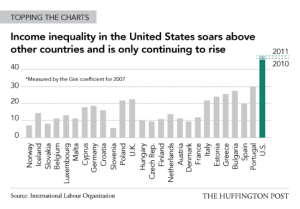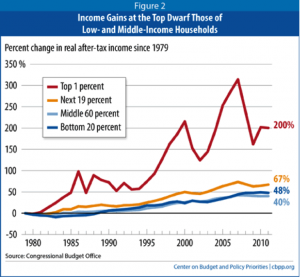Written by AshLee Smith
Are race and class inherently intertwined or can they be separated? Adolph Reed argues that race and class are inherently intertwined with capitalism in the U.S. He believes that race and class cannot be separated, however, Ellen Meiksins Woods boldly argues that, “Capitalism is conceivable without racial divisions, but not, by definition, without class.” She defines capitalism as, “a system in which all economic actors, producers, and appropriators, depend on the market for the most basic conditions of their self-reproduction.” After reading both arguments and rebuttals, I tend to agree with Ellen Meiksins Woods. To me race stands apart from class, though they do tend to work together, especially in producing inequalities in our country. However, I believe that it is clear that we can have a class hierarchy without a racial hierarchy. This has been shown clearly throughout history (for example the serfdom status that peasants held under feudalism or even the caste system in India). Reed writes a degrading rebuttal and believes that Woods is “fatally miscast” and he contends that she “establishes an either or framework.” However, again, I take issue with Reed’s notion that race and class cannot be separate. It is not an absolute that race and class are inherently intertwined. For example, one of the front-runners for the Republican Party is a Black man who grew up severely impoverished and now in addition, to running for president, he is a world-renowned neuro-surgeon. Although this is one case, this is clear example that being a person of color does not mean that one’s class is ascribed to them at birth.
I disagree with the my classmate, Runjini Raman, that “race and class are so linked when it comes to what one is able to do educationally, career-wise, financially, etc., that it’s impossible to separate them.” A non-white person with a college education statistically looks similar to a white person with a college education and white people who do not graduate high school look more like non-white people who did not finish high school. Robert Putnam, a political scientist at Harvard University argues that, “class not race is the dominant dimension of difficulty [in the U.S.]” and he notes, “racial differences controlling for class are decreasing while class differences controlling for race are increasing in America.” Class differences (most notably known in the U.S. as income inequality) depress the American Dream and social mobility. As you can see in the chart below, The United States income inequality skyrockets above other countries and continues to rise. This is a major issue and one that Woods and I both see as a concern for all in the U.S. regardless of race.
This chart shows us the income distributions in the U.S. since 1980.
In class we discussed if policies should be local and race specific or broad sweeping and not specific. I contend that if we are to implement the most positive change we need broad sweeping policies that lift people up regardless of their race. As a future policy scholar, I believe that the issue of our day is income inequality not race inequality. Yes, race inequality does matter, but it is evident that the main policy issue in America is the rising income inequality and wealth disparity that inflicts 99% of the U.S. and this effects all, no matter if you are black, white, Asian, or Latino.
Please see the following links for more information about income inequality and the citations that I used:
Robert Putnam – The Atlantic Piece
CBPP – Income Inequality Trends


